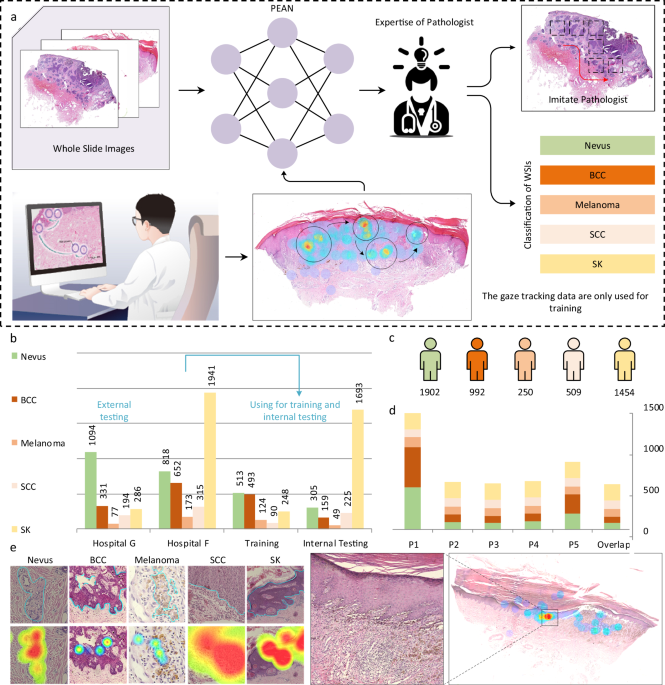TheSequence Radar #674: Transformers in the Genome: How AlphaGenome Reimagines AI-Driven Genomics
I have been obsessed with AI in genetics for some time so I couldn’t write about anything else today other than DeepMind’s new model: AlphaGenome!
merges some of the best -established techiques in AI-driven genomics such as large-scale sequence context with base-pair precision to chart the regulatory genome in a way never before possible. The model’s four-headed architecture digests up to one million contiguous base pairs in a single pass, outputting synchronized predictions for chromatin accessibility, transcription-factor occupancy, RNA expression, splicing, and 3D genome architecture. This unified approach replaces fragmented, single-modality pipelines—each requiring separate models and datasets—with one cohesive model that excels across tasks, streamlining variant effect analysis for researchers.
At its core, AlphaGenome marries convolutional layers, which capture local nucleotide motifs analogous to transcription-factor binding sites, with transformer modules that integrate distal regulatory elements hundreds of kilobases apart. DeepMind’s design eschews downsampling, ensuring every nucleotide contributes to high-resolution inferences. As functional genomics datasets from consortia like ENCODE, GTEx, and 4D Nucleome expand, this backbone stands ready to unveil regulatory grammar buried deep in non-coding DNA.
Traditional genomics models often excel at one signal—SpliceAI for splicing, ChromBPNet for chromatin state—necessitating an ensemble of tools to profile variant consequences fully. AlphaGenome’s simultaneous four-headed predictions eliminate this bottleneck, revealing cross-modal interactions—e.g., how a variant that disrupts a splice site may also alter local chromatin loops—opening novel avenues for mechanistic insight.
In benchmark evaluations spanning 24 sequence-prediction and 26 variant-effect tasks, AlphaGenome matches or surpasses specialized baselines in over 90% of cases. It outperforms SpliceAI, ChromBPNet, and other state-of-the-art models by significant margins, all while completing variant-effect scans in under a second—transforming in silico hypothesis testing from minutes or hours to real-time speed.
The genomics market in 2025 stands at an inflection point: cloud-based sequencing costs have halved over five years, single-cell and long-read technologies have become routine, and multi-omic datasets proliferate. Yet, analytical bottlenecks limit the translation of raw data into actionable insights. AlphaGenome arrives precisely when biotechnology and pharmaceutical companies demand scalable, AI-driven interpretation to bridge the gap from variant discovery to biological understanding. Its ability to standardize and accelerate regulatory variant annotation is poised to catalyze next-generation diagnostic tools, precision therapeutics, and synthetic biology platforms, redefining competitive advantage in a data-saturated market.
DeepMind’s preview API grants non-commercial researchers early access to AlphaGenome, democratizing large-scale regulatory predictions. From pinpointing causal non-coding mutations in disease cohorts to engineering synthetic enhancers with bespoke cell-type specificity, this open sandbox invites collaborative breakthroughs across academia and industry.
If AlphaFold decoded protein structures, AlphaGenome now deciphers the regulatory code—the “dark matter” governing gene expression. As single-cell, long-read, and cross-species datasets proliferate, the model’s extensible architecture promises seamless integration of new modalities. The future of genomics is computational, and AlphaGenome lights the path forward: an intellectual and technological leap toward understanding—and ultimately rewriting—the language of life.
AlphaGenome is a deep learning–based sequence-to-function model that ingests one megabase of DNA sequence and predicts thousands of functional genomic tracks—including gene expression, transcription initiation, chromatin accessibility, histone modifications, transcription factor binding, chromatin contact maps, and splicing—at single-base-pair resolution. Trained on both human and mouse experimental data, it unifies long-range sequence context with high prediction resolution, outperforming prior methods and enabling comprehensive in silico characterization of regulatory variant effects.
Pattern Labs / Anthropic
This whitepaper defines the architecture of a “confidential inference system” that leverages hardware-based Trusted Execution Environments (TEEs) to protect both user data (model inputs/outputs) and model assets (weights and architecture) during AI inference workloads. It further details reference designs for secure model provisioning, enclave build environments, service provider guarantees, and a comprehensive threat model to mitigate systemic and implementation-introduced risks.
MIT CSAIL
USAD distills knowledge from multiple domain-specific self-supervised audio models into a single student network capable of representing speech, music, and environmental sounds. By training on a diverse multimedia corpus with layer-to-layer distillation, it achieves near state-of-the-art performance across frame-level speech tasks, audio tagging, and sound classification.
CASIA / BAAI / Tsinghua University / HKISI
UniVLA reformulates vision, language, and robotic actions into shared discrete tokens and learns them jointly in an autoregressive transformer, eliminating separate modality encoders or mapping modules. This unified approach, trained on large-scale video datasets, sets new benchmarks on multi-stage robot manipulation tasks like CALVIN and LIBERO.
ByteDance Seed / Shanghai Jiao Tong University
ProtoReasoning introduces “reasoning prototypes”—abstract Prolog and PDDL templates—that capture common logical patterns across diverse tasks and guides LLMs to translate problems into these prototypes. Automated prototype construction and verification via interpreters boosts model generalization and reasoning performance on out-of-distribution benchmarks.
Sakana AI
Summary: This work trains compact “Reinforcement-Learned Teachers” that ingest both questions and ground-truth solutions to learn dense rewards aligned with student performance, departing from sparse-reward paradigms. A 7B-parameter teacher model surpasses much larger reasoning models on competition-level math and science benchmarks and transfers zero-shot to novel tasks.
Google released a full version of Gemma 3n, its mobile optimized model.
Google open sourced Gemini CLI, a coding terminal agent powered by Gemini.
Manus released an agentic browser.
Alibaba open sourced Qwen-VLo, an image understanding and generation model.
Anthropic showcased Project Vend, a system that allows Claude to run a small shop.
Pinterest shares how they scale end-to-end ML pipelines with Ray.










